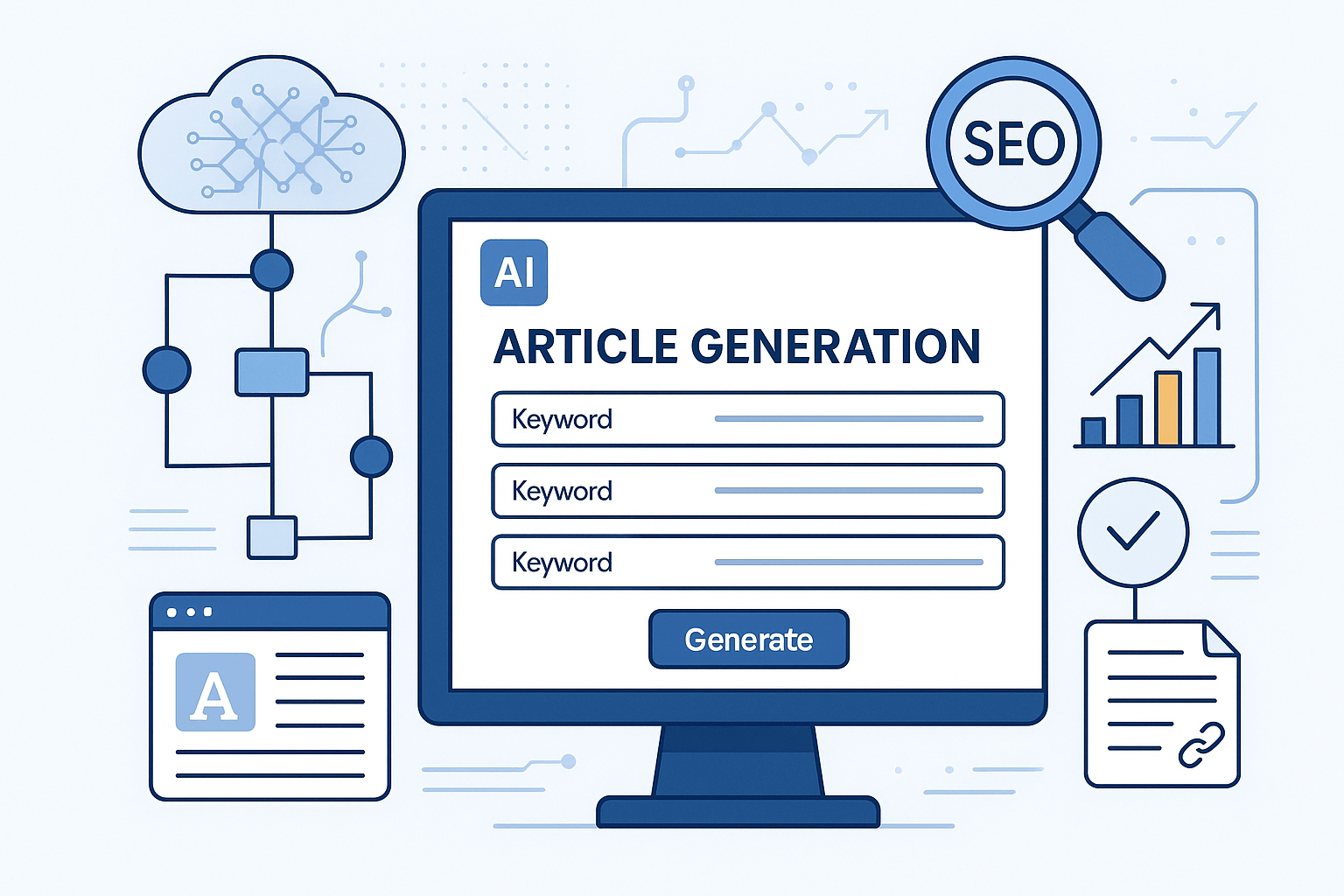Kafkai’s Article Generation System: An Iterative Approach to Strategic Content
At Kafkai, we believe that building tools for strategic content creation isn’t just about algorithms; it's about understanding the workflows and challenges of content teams. This recent update to our article generation system reflects that commitment – a direct result of listening to our users and continuously evaluating how we can best empower them. It’s important to view this not as a 'release,' but as a step in an ongoing cycle of refinement, much like the iterative development principles that underpin successful software engineering.

Understanding Kafkai’s Role in Strategic Content
For those unfamiliar, Kafkai is more than just a content creation platform; it's a business intelligence system designed to bridge the gap between data-driven insights and content strategy. We analyze not just your website’s performance, but also that of your competitors, identifying opportunities and informing the creation of content that resonates with your target audience. The core of Kafkai is twofold: robust business intelligence that reveals strategic avenues, and AI-powered article generation that translates those insights into actionable content. I’ve seen firsthand how powerful this combination can be – especially when used to address underserved niches or to challenge dominant narratives in a market.
This aligns with my broader philosophy: technology should be a tool for empowerment, particularly for those seeking to build something new or to disrupt established players.
Key Enhancements: Addressing Real-World Needs
This update focuses on addressing practical considerations that content teams face daily. Let's look at the specific changes:
1. Multi-Keyword Targeting: Addressing the Complexity of Topics
One of the most significant shifts is the introduction of multi-keyword targeting. The reality is that most compelling content doesn's fit neatly within a single keyword. It explores interconnected themes, nuances, and perspectives. Allowing users to target multiple keywords from a single strategy reflects this complexity. Connecting disparate concepts into a coherent narrative is inherently challenging, which is why AI is essential here. My work with the Python Software Foundation has highlighted the importance of tackling complex problems with elegant, automated solutions.
2. Writing Style Options: Tailoring Content to Audience & Purpose
We're now offering three writing style options: Explanatory, Professional, and Story Format. This goes beyond superficial customization; it recognizes that different topics and audiences require different approaches. The Explanatory style is ideal for establishing authority, the Professional style for business audiences demanding precision, and the Story Format for narratives that drive engagement. This is something I’m passionate about – understanding the cultural context and tailoring communication appropriately. I've seen firsthand how important this is, both in the Japanese business environment and when interacting with the diverse communities within the Python Foundation.
3. Concept Selection: Architecting the Content Journey
Before generating an article, you'll now choose from a selection of AI-suggested concepts. This mirrors the planning process of experienced writers – and elevates the entire process. It provides an additional layer of control, helping to ensure the final output aligns with the underlying strategic goals. It's about more than just keywords; it’s about the overall architecture of the content journey.
4. Improved Article Length Control: Long-Form Content with Coherence
We've made significant improvements to how the system handles longer content. Past feedback indicated a drop in quality when pushing beyond a certain length – an issue we’ve addressed directly. While article length isn't a direct ranking factor according to Google John Mueller, different topic requires different approaches in a variety of content formats and lengths. This update acknowledges that reality and provides the flexibility to do so effectively.
5. Streamlining the Workflow: Removing Outline Editing
Based on your feedback, we're removing the outline editing step. While the intention was to provide granular control, it ultimately introduced friction into the workflow. We remain committed to continuous improvement and prioritize ease of use. The core article can still be refined afterwards, allowing for creativity and personalization.
6. Automated Source Citations: Enhancing Credibility & Performance (Growth Plan and above only)
The addition of automatic source citations is a significant enhancement. Citations improve both credibility and SEO performance by backing up content with trusted sources, as Google's algorithms prioritize Expertise, Authoritativeness, and Trustworthiness (E-A-T). This feature converts what was previously a time-intensive manual process into an automated step.
Automated Source Citations are only available to Growth Plans and above
Looking Ahead: Content as a Strategic Asset
These changes reflect our commitment to making Kafkai a more valuable tool for strategic content creation. The combination of multi-keyword targeting, flexible writing styles, enhanced long-form content handling, and automated citations will empower you to create more effective content, with less manual effort. Content isn't just about words; it's a strategic asset that drives business outcomes. We’re dedicated to providing the tools and insights to help you leverage it to its full potential.
The updated article generation system is live now within your Kafkai dashboard. We’re eager to hear your feedback as you explore these new capabilities.